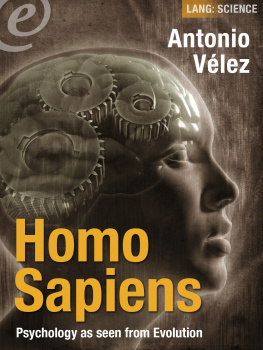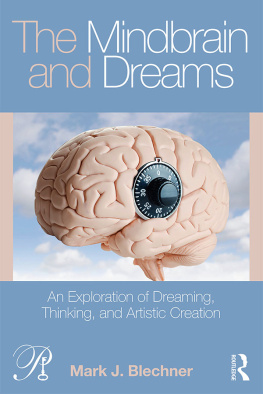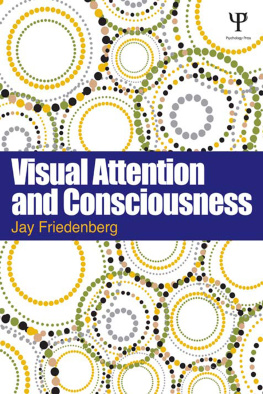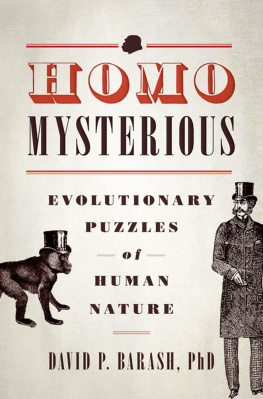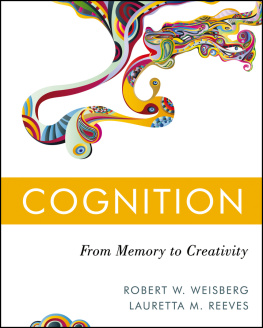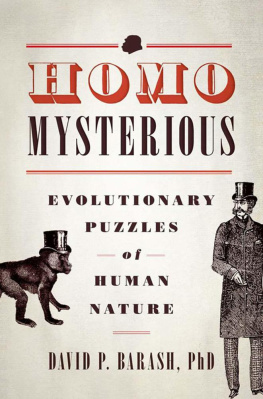

how Homo became sapiens
on the evolution of thinking
PETER GARDENFORS
How Homo
Became Sapiens
How Homo
Became Sapiens:
On the Evolution of Thinking
Peter Gardenfors
Lund University
Cognitive Science
Kungshuset
S-222 22 Lund
Sweden
OXFORD
UNIVERSITY PRESS
OXFORD
VNIVBB.SITY PB.BSS
Great Clarendon Street, Oxford OX2 6DP
Oxford University Press is a department of the University of Oxford.
It furthers the University's objective of excellence in research, scholarship, and education by publishing worldwide in
Oxford New York
Auckland Cape Town Dar es Salaam Hong Kong Karachi Kuala Lumpur Madrid Melbourne Mexico City Nairobi New Delhi Shanghai Taipei Toronto
With offices in
Argentina Austria Brazil Chile Czech Republic France Greece Guatemala Hungary Italy Japan Poland Portugal Singapore South Korea Switzerland Thailand Turkey Ukraine Vietnam Oxford is a registered trade mark of Oxford University Press in the UK and in certain other countries
Published in the United States
by Oxford University Press Inc., New York
Peter Giirdenfors, 2006
The moral rights of the author have been asserted
Database right Oxford University Press (maker)
First published 2003 (hardback)
Paperback first published 2006
Al rights reserved. No part of this publication may be reproduced, stored in a retrieval system, or transmitted, in any form or by any means, without the prior permission in writing of Oxford University Press, or as expressly permitted by law, or under terms agreed with the appropriate reprographics rights organization. Enquiries concerning reproduction outside the scope of the above should be sent to the Rights Department, Oxford University Press, at the address above
You must not circulate this book in any other binding or cover and you must impose the same condition on any acquirer A catalogue record for this title is available from the British Library Library of Congress Cataloging in Publication Data Data available
Typeset by Newgen Imaging Systems (P) Ltd., Chennai, India Printed in Great Britain
on acid free paper by Biddies Ltd, King's Lynn
ISBN 0 19 852851 5 (Pbk: alk. paper) 978 0 19 85285 1 7 (Pbk: alk. paper) 10 9 8 7 6 5 4 3 2 1
Preface
The fundamental question of humanism is: what is a human being? From a biological point of view, human thinking is unequalled. My aim in this book is to describe how uniquely human thinking has emerged. I view knowledge as biologically grounded and I will start from the theory of evolution. However, as I shall argue, the biological foundation does not conflict with a humanistic outlook. On the contrary, I want to show that much of a humanistic worldview can be derived from an evolutionary story of our origins.
I have dual objectives for the book. On the one hand, I want to present my own theory of the evolution of thinking. The theory is a synthesis of material from several scientific disciplines. On the other, I want to tell a story about how the cognitive capacities of Homo sapiens were shaped in a way that is accessible to a general audience. For the latter purpose, much of the academic material has been banished to footnotes and endnotes.
The earlier Swedish version of the book was a result of The cognitive revolution project that was conducted at the Institute for Future Studies. I want to thank Professor .Ake E. Andersson who initiated the project and the Institute for Future Studies for many kinds of support. The Swedish Foundation for Strategic Research has contributed to a good research environment at the section for Cognitive Science at Lund University, where most of the work on the book has been done. Also Centre Culture! Suedois in Paris was an excellent environment for writing.
The English version of the book has to a considerable degree been updated and revised to bring it in line with the latest developments of research.
I have received help and comments from many people during different stages of the work. I wish to thank Christian Balkenius, Martin Baum, Ingar Brinck, Nils Dahlback, Daniel Dennett, Jeanette Emt, Annette Gardenfors, Ulf Gardenfors, Agneta Gulz, Magnus Haake, Gisela Hakansson, Lars Hall, Nicholas Humphrey, Petter Johansson, Peter Kitzing, Karina Klok Madsen, Lars Larsson, David de Leon, Jens Mansson, Bjorn Merker, Mathias Osvath, Mary-Anne Williams, Joanna Rose, Birgitta Sahlen, Sverre Sjolander, Peter Sylwan, Lena Wahlgren, Petra Zucker Bjorne, and the anonymous reviewers for Oxford University Press. Magnus Haake has congenially drawn many of the ilustrations, Ric Fisher and Alan Crozier have been very helpful in the process vi
PREFACE
of translating the text, and Ann Tobin has done excellent detective work in chasing down English versions of the literary quotations I use.
In the book, I am frequently citing the French poet Paul Valery. Many decades ago, he wrote in one of his aphorisms a strangely close summary of the contents of this book:
Homo stands on his legs. And he copulates at any season, face to face.
Has an opposable thumb. Is omnivorous. Capable of attention even to objects not before his eyes.
Thanks to what he calls thought, reflection, obsessions, and so forth, he can dream constructively during his waking hours, combining his imaginings with his perceptions and eliciting from them plans of action, co-ordinated movements, a sort of reorganization of his instincts, desires, etc.
He modifies his environments, hoards, keeps what he has got, foresees, and innovates. Has means, in short, of "getting there."
Contents
1 Thinking from an evolutionary perspective 1
1.1 The human family tree 2
1.2 Enter Homo 5
1.3 What is to be explained: the components of thought 8
1.4 Four sources of empirical support 16
1.5 Early stages in the evolution of thought 18
1.6 Skinnerian beings 20
2 Sensation, perception and imagination 25
2.1 Sensations: being aware of the world 26
2.2 The art of aiming-why chimpanzees cannot throw darts 27
2.3 Perceptions: seeing the world 30
2.4 Categorical perception: sorting the world into boxes 34
2.5 Object permanence: the world outside our sensations 36
2.6 The art of chasing a mouse 37
2.7 Going between the senses 39
2.8 Causal reasoning: finding the invisible threads 41
2.9 A room with a view 46
2.10 Imagination: detaching the senses 47
3 The world within 55
3.1 Popperian beings 55
3.2 Representations and the brain 58
3.3 Pretence: playing in the inner world 60
3.4 Directing thought: intentionality 62
3.5 Imitation-why apes cannot ape 65
3.6 Planning-why the squirrel does not plan for the winter 69
3.7 Ockham's razor 71
3.8 Thinking about tomorrow 73
3.9 Making tools 76
3.10 The human dilemma 79
viii
CONTENTS
4 Reading other people's minds 83
4.1 Levels of theory of mind 83
4.2 Understanding emotions 84
4.3 Understanding attention 86
4.4 Understanding intentions 89
4.5 Understanding what others know 93
4.6 Deception 98
4.7 Machiavellian intelligence 103
4.8 Autism: when there are gaps in the inner world 106
5 Self-consciousness 111
5.1 What is self-consciousness? 111
5.2 Animals for themselves: why baboons do not wear lipstick 114
5.3 Communication, attention, and consciousness 120
Next page

